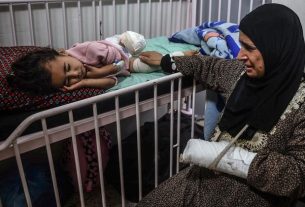Introduction
The World Bank estimates that over 1.8 billion people live in conflict-affected and fragile states, representing nearly a quarter of the global population. These regions are marked by political instability, violence, and weak governance, leading to severe humanitarian challenges. Understanding the implications of this statistic is crucial for policymakers, aid organizations, and global citizens alike.
Key Factors Contributing to Fragility
- Political Instability: Fragile states often struggle with governance issues, including corruption, lack of political representation, and weak institutions. This instability can exacerbate tensions and lead to violence.
- Economic Challenges: Many conflict-affected areas suffer from economic deprivation, high unemployment rates, and limited access to markets. This economic vulnerability makes it difficult for communities to rebuild and thrive.
- Social Cohesion: Ethnic, religious, or cultural divisions can be exacerbated in times of conflict. In fragile states, these divisions can lead to violence and hinder reconciliation efforts.
- Environmental Factors: Resource scarcity, climate change, and environmental degradation can heighten tensions in fragile states, particularly when communities compete for limited resources.
Humanitarian Impact
The consequences of living in conflict-affected areas are dire:
- Displacement: Millions are forcibly displaced, with refugees and internally displaced persons facing significant risks to their safety, health, and dignity.
- Access to Basic Services: Conflict disrupts healthcare, education, and social services. In fragile states, children are often out of school, and health systems are overwhelmed or non-existent.
- Food Insecurity: Conflict exacerbates food shortages, leading to malnutrition and starvation, particularly among vulnerable populations like children and pregnant women.
Global Response and Solutions
Addressing the challenges faced by populations in fragile states requires a multifaceted approach:
- Humanitarian Aid: Immediate relief efforts are crucial to address basic needs—food, shelter, and medical care—especially in the aftermath of conflict.
- Development Assistance: Long-term investments in infrastructure, education, and economic opportunities are necessary for sustainable recovery. Programs that promote job creation and vocational training can empower communities.
- Peacebuilding Initiatives: Supporting dialogue and reconciliation efforts can help address the root causes of conflict. Engaging local communities in peacebuilding can foster trust and cooperation.
- Strengthening Governance: Building strong institutions and promoting good governance are essential for stability. This includes enhancing accountability, transparency, and public service delivery.
Conclusion
The presence of over 1.8 billion people in conflict-affected and fragile states underscores the urgent need for global attention and action. By addressing the underlying issues contributing to fragility and investing in sustainable solutions, the international community can help build a more peaceful and resilient world. Collaborative efforts among governments, NGOs, and local communities are essential to create lasting change and improve the lives of those affected by conflict.



